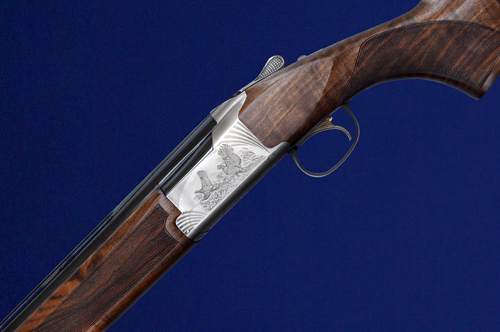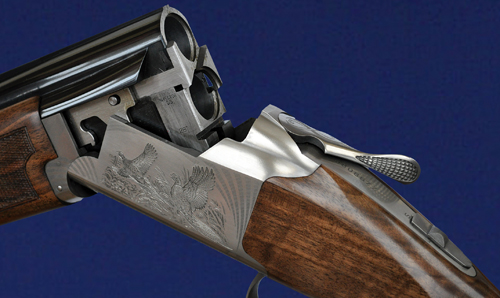Win CENS ProFlex DX5 earplugs worth £1,149 – enter here
Browning B725 Hunter shotgun review
The Browning B725 Hunter shotgun comes with an excellent new design, improved trigger pulls and a clever choke system.

Browning B725 Hunter shotgun.
Manufacturers have a habit of making cosmetic changes to guns and presenting them as new models.
However, this month’s test gun, while familiar in some respects and showing a clear heritage, is an entirely new gun with some interesting, indeed, novel features.
It is from the Browning stable and is called the 725. We are familiar with the 425/525 (and there has also been a very similar 625 available in the States) but this gun represents a new generation of Brownings.
It will be marketed in tandem with the 525 for the moment.
If I were to make a rough comparison, it would be between the Beretta Silver Pigeon on the 600 series action and the new Prevail and Perennia based on that firm’s new SV10 chassis.

From a distance you might be forgiven for thinking that there is not much that is different about the new Browning, but you would be mistaken.
The action is significantly lower (though it retains a full-width cross pin and the traditional locking/ bolting system of the Browning Superposed/B25).
The barrels are significantly lighter, too, not to mention back-bored (which means they are wider in bore diameter than the average 12″ though this feature is not original to the 725).
They have extended forcing cones and 3in (76mm) chambers proofed for steel shot. There is minimal “tromboning” at the muzzles to accommodate the new Invector DS (Double Seal) system chokes.
So, what is new about the barrels is that they are narrower at the muzzle and this innovation has moved the balance point back by approximately 10mm.
There is a new mechanical trigger system offering crisper, lighter pulls (about 3lb) and reduced trigger movement and lock time.
There is an inertia safety sear incorporated in the mechanism, too.
An In-Flex II hi-tech polymer recoil pad is not only exceptionally light, with excellent recoil absorption characteristics, but “non-stick”, too, and available in a variety of lengths (which allows for alterations to butt length with minimal work).
It is better shaped than many at its sole as well.
Aesthetically, the 725 has an action which is not only lower in profile but has reshaped shoulders and fences, and a remodelled top lever.
The Hunter is decorated with gamebirds and has some modernistic, radiused lines to the edges, reminiscent of a sunburst.
It is quite attractive, the birds are well enough done, and the adornments in good taste, but it would be more dramatic if the engraving were a little deeper.
Something like the embellishment on a Grade V Miroku would work really well, mind you, at this very reasonable price point, such refinement may not be possible.
Read more gun reviews!
Related Articles
Get the latest news delivered direct to your door
Subscribe to Shooting Times & Country
Discover the ultimate companion for field sports enthusiasts with Shooting Times & Country Magazine, the UK’s leading weekly publication that has been at the forefront of shooting culture since 1882. Subscribers gain access to expert tips, comprehensive gear reviews, seasonal advice and a vibrant community of like-minded shooters.
Save on shop price when you subscribe with weekly issues featuring in-depth articles on gundog training, exclusive member offers and access to the digital back issue library. A Shooting Times & Country subscription is more than a magazine, don’t just read about the countryside; immerse yourself in its most authoritative and engaging publication.










